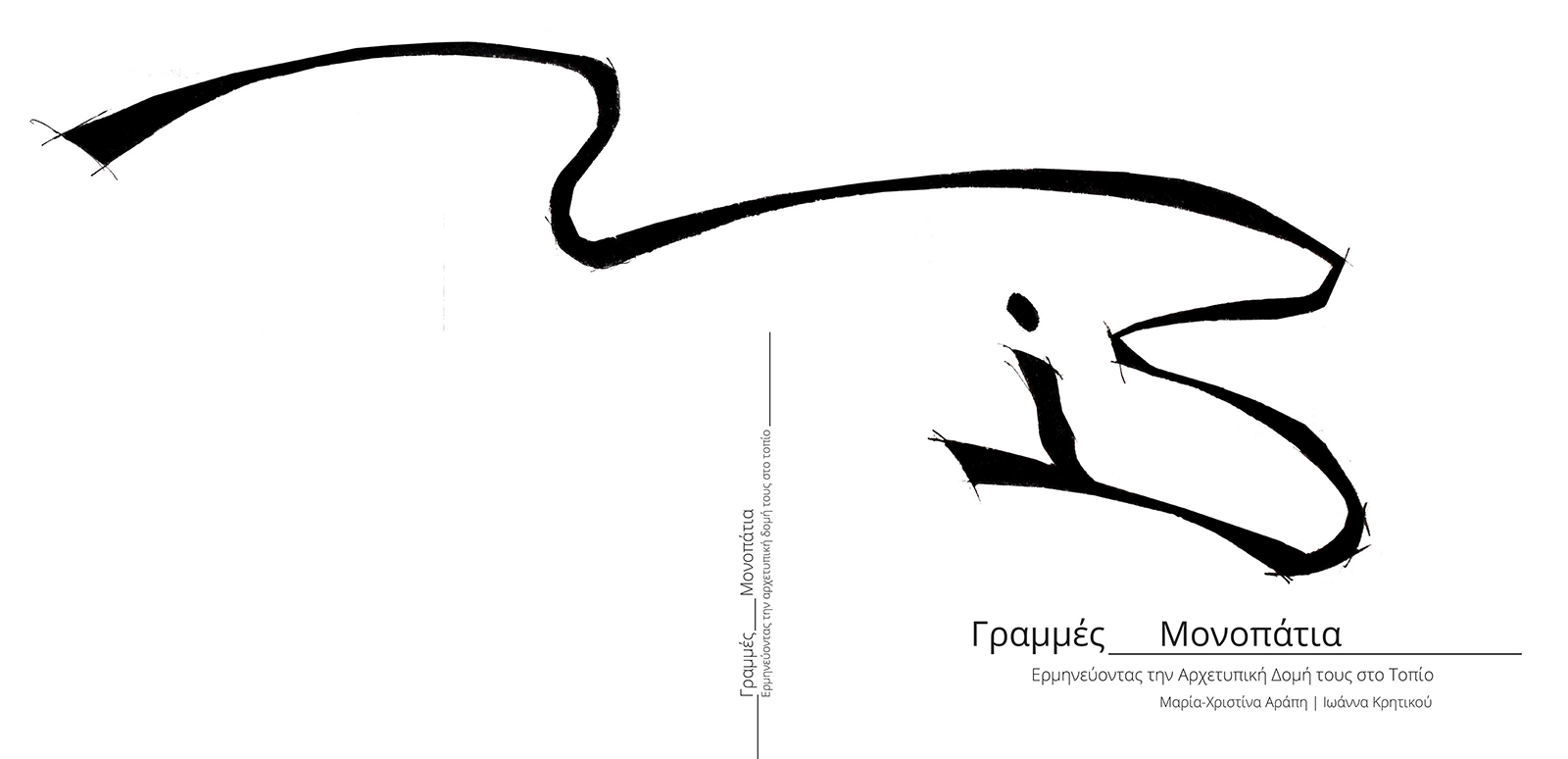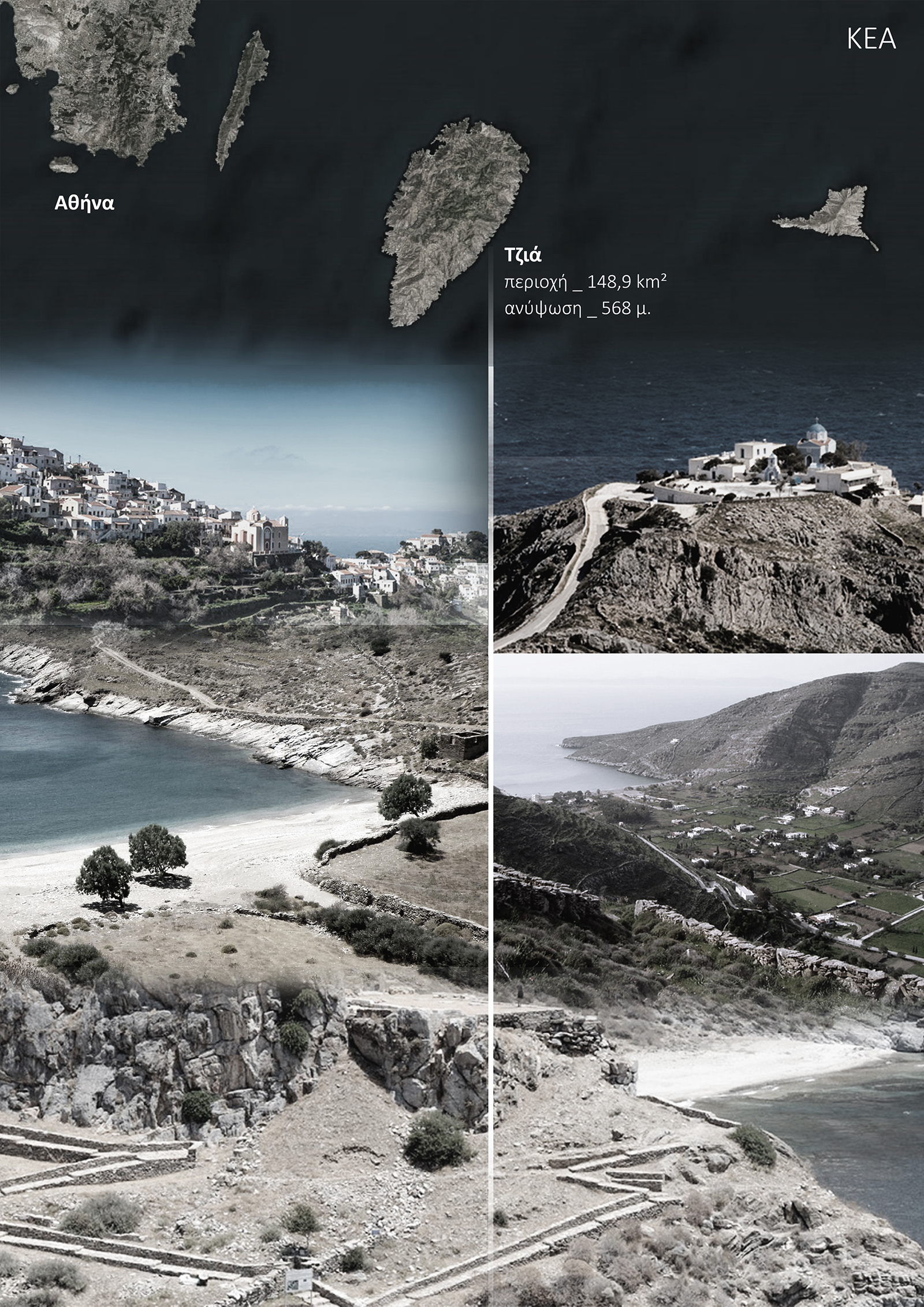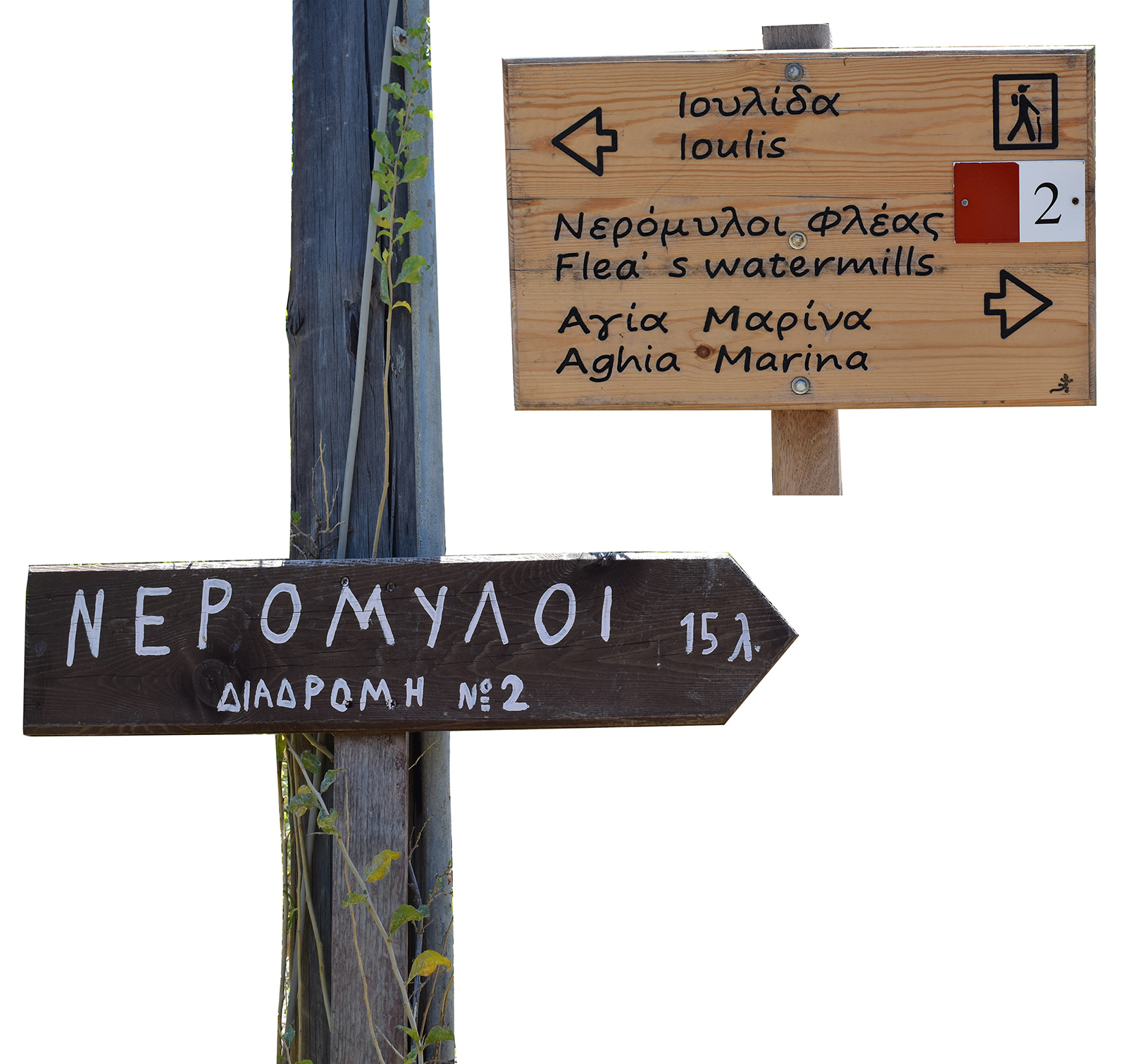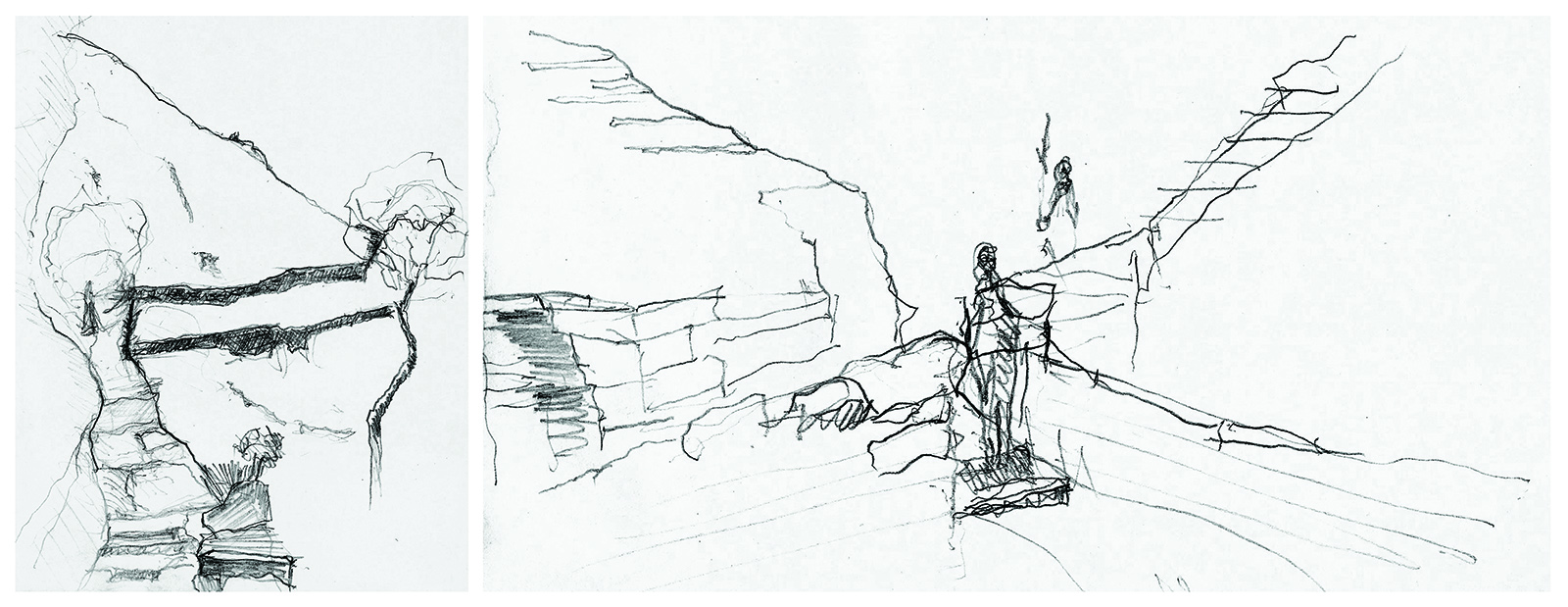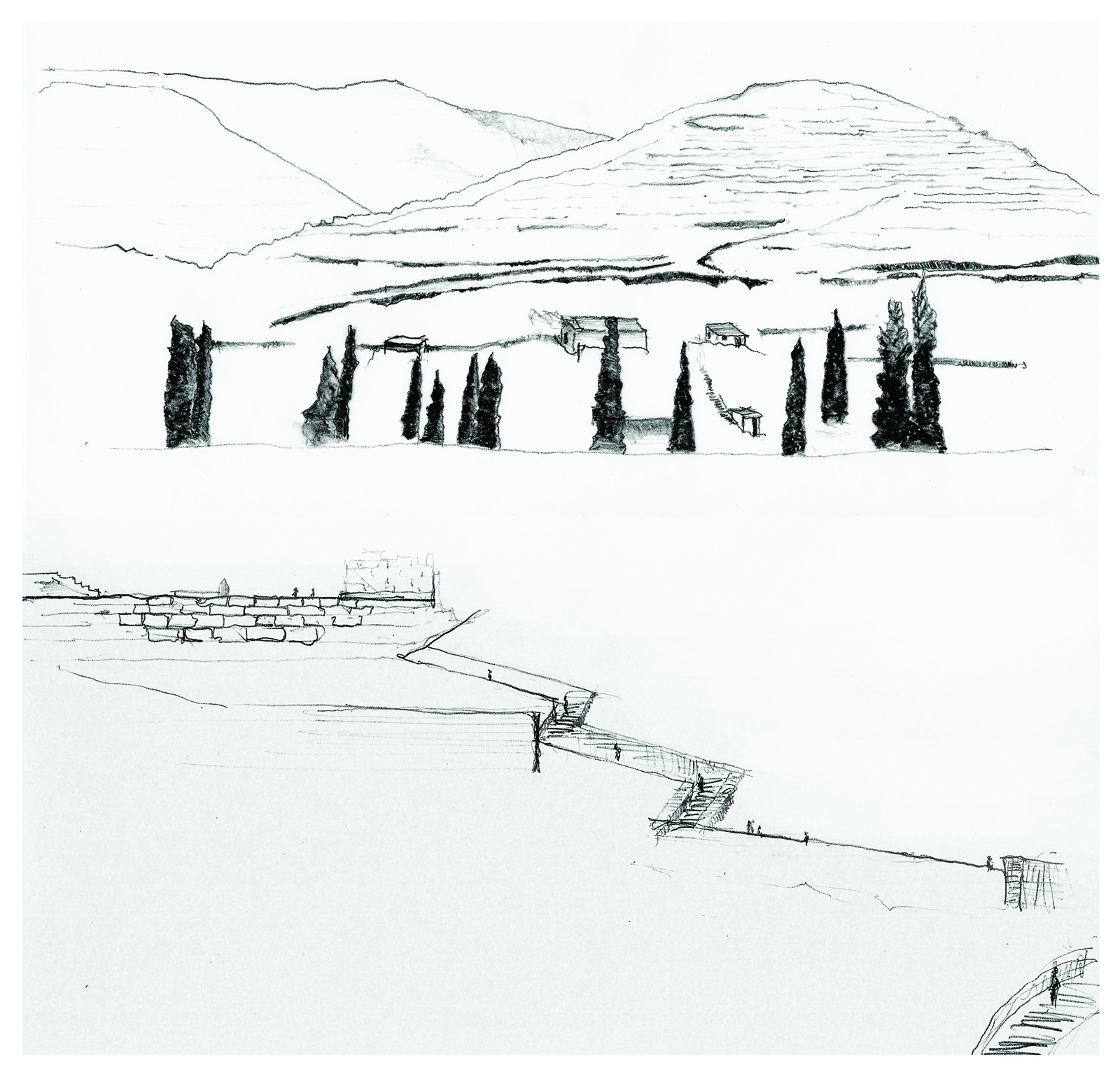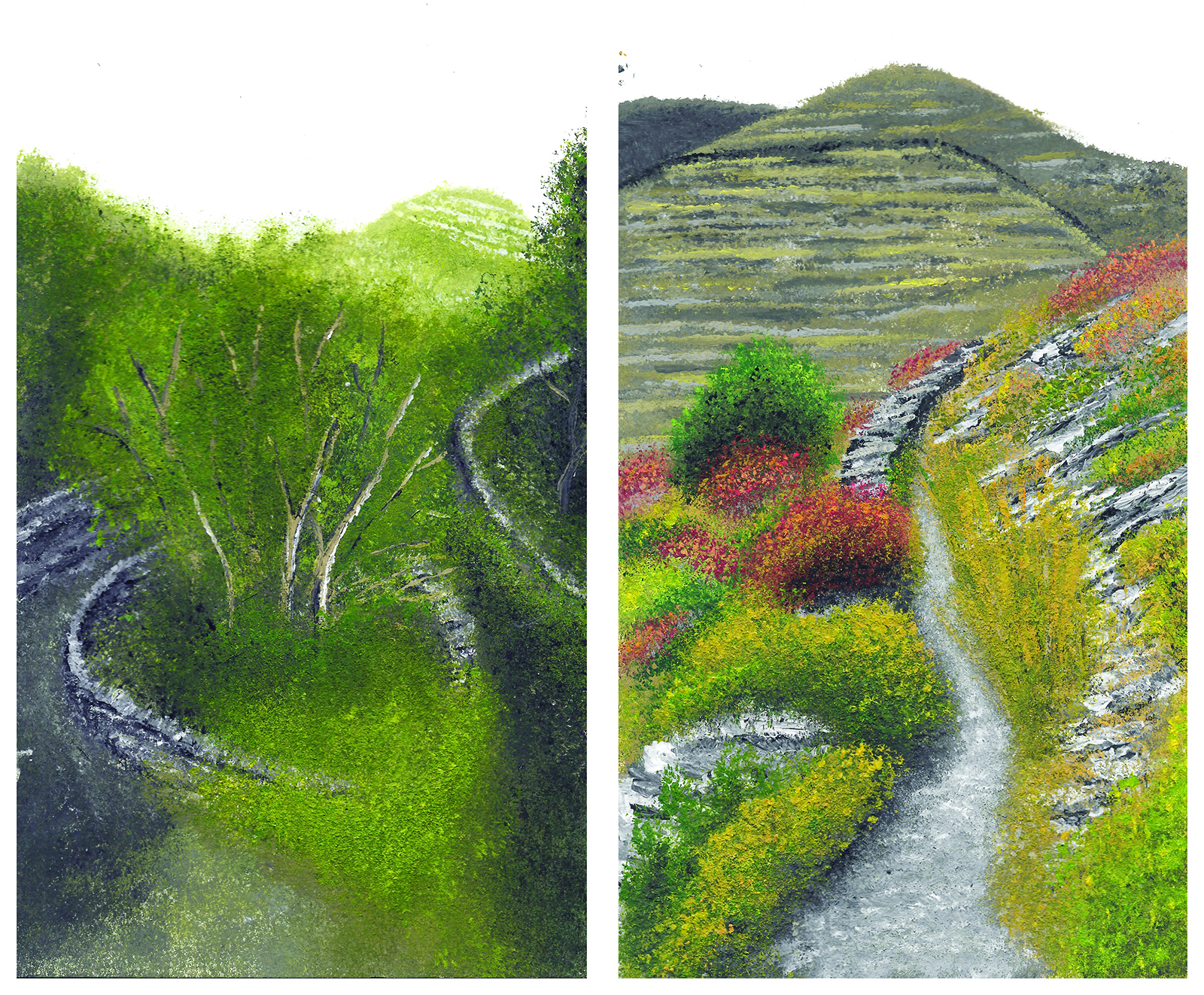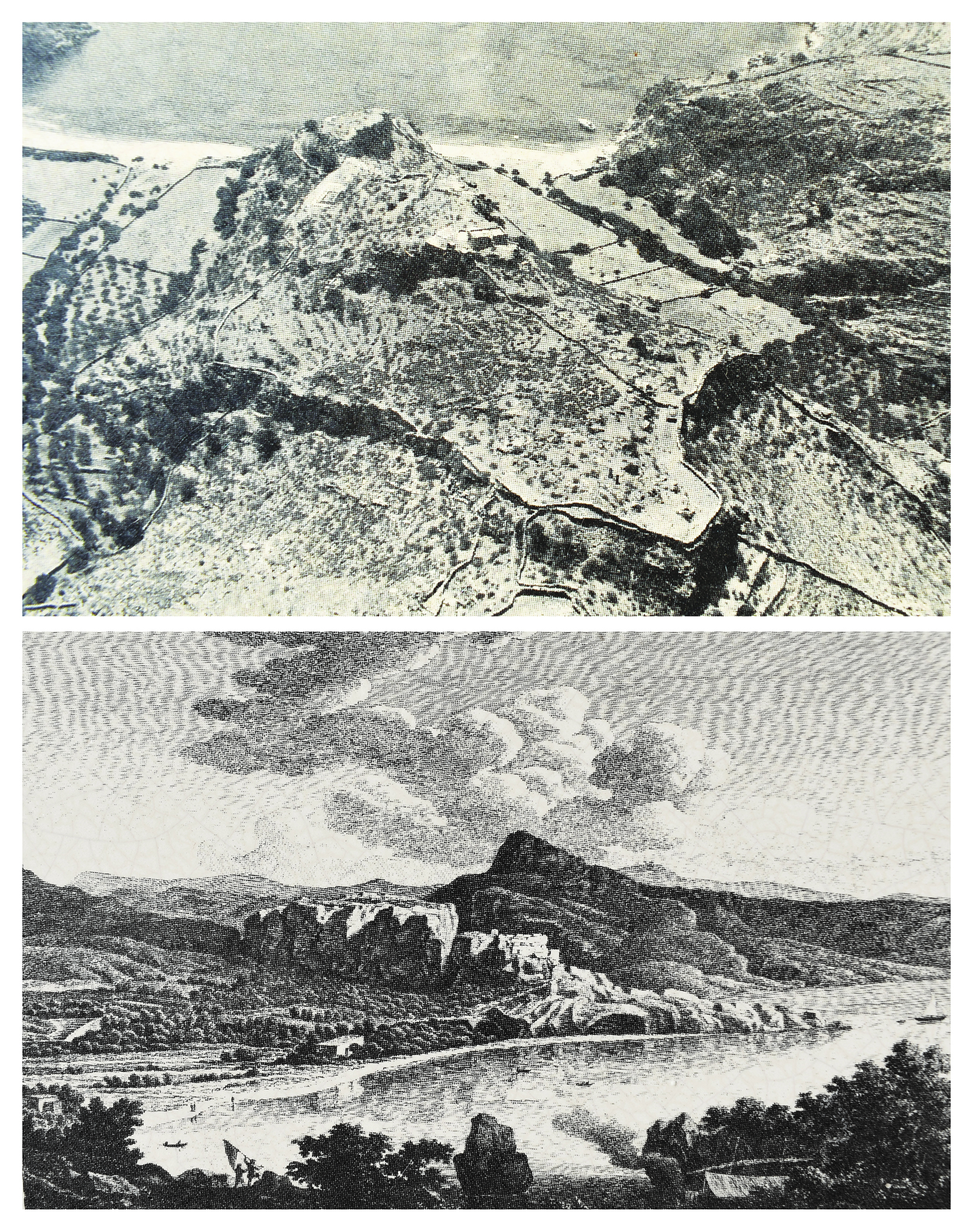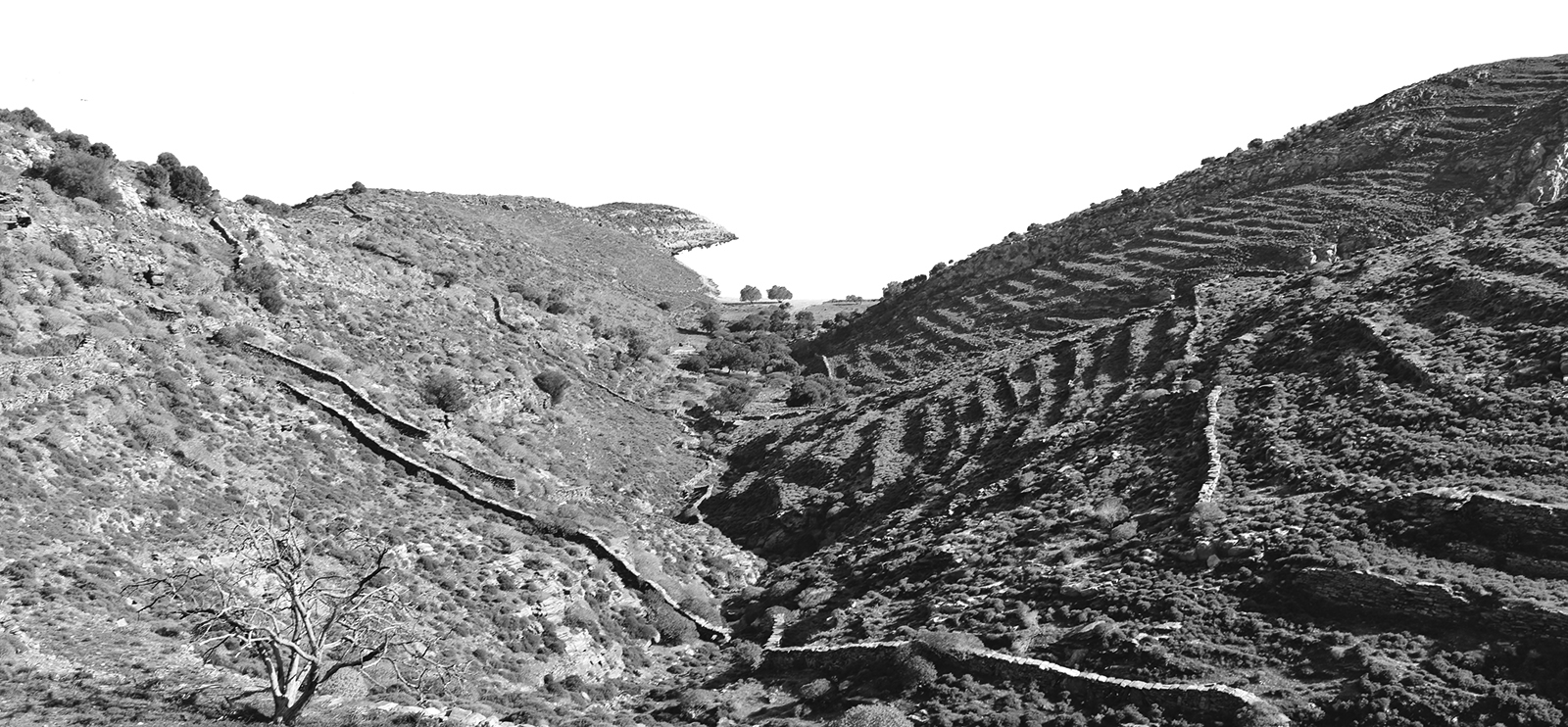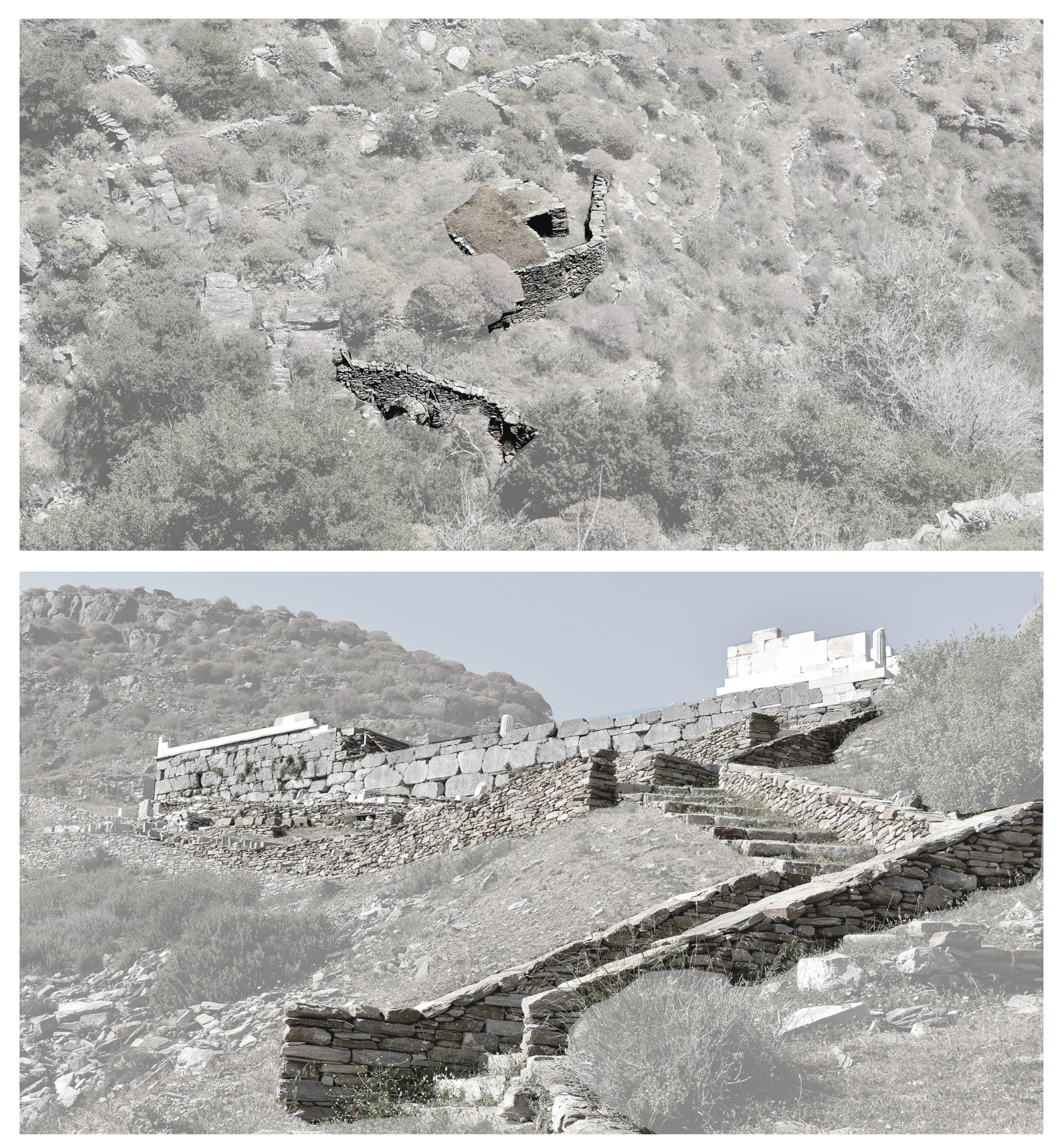This research studies the notion of path as an archetypical concept in natural and in architectural landscapes. The main research questions are: How does a ‘spontaneous movement’ in the landscape can define, shape and eventually change space and the way that we perceive it? In which way does space itself affects the way in which the spontaneous movement of a path is imprinted in the landscape?
The research starts from the concept of nature as a fundamental spatial context of great importance, because in nature, appear the purest forms of paths. In this context, path contains the characteristics of an archetype. Path as a theoretical concept can been associated with a large number of meanings. Initially, it represents the movement of the body and also the traces that the body leaves through its presence in a particular position. Moreover, the path is an active structure that can, continually, reenact new meanings, redefine its position in space and eventually be a crucial part of peoples’ life. The path is a primitive and eternal structure, which has its roots back in time and history. It is a simple gesture, but at the same time, so necessary and essential, that seems to be a part of the world from the beginning of its existence.
In order to engage in a more personal way with the above questions and to ground the theoretical analysis of the topic, the research used as a key study a particular path at the island of Kea, which is located in the complex of Cyclades of the Aegean Sea. This path was a route in the landscape starting from the village Stavroudaki and ending to the ancient city of Karthaia.
The personal experience of walking this path had a descriptive force that transgressed the mere explanation and analysis. The tangible experience of walking in the landscape became a fundamental research method that not only gave opportunity for further reflection, but also produced a series of various representations of the experience (texts, drawings, photos, videos). This experience was instilled back in the theoretical analysis, that seek to associate notions of geometry in relation to landscape, place and nature, inhabitation and memories, walking and sensations.
Furthermore, the study explored the way that paths can been used and incorporated in architecture (traditional and contemporary) through a categorization of possible relations that can be found between paths and buildings. Furthermore, a connection was also made between the natural and traditional form of the path and the way it can be re-created, through various types of routes designed in contemporary architecture.
Through the above interlinked approaches, this research outlines the influence and transformations that paths induce in natural landscapes, the way that natural elements can affect their form, and possible ways that paths can be utilized during the designing process in architecture.
https://issuu.com/kritikouioanna/docs/gia-issuu

